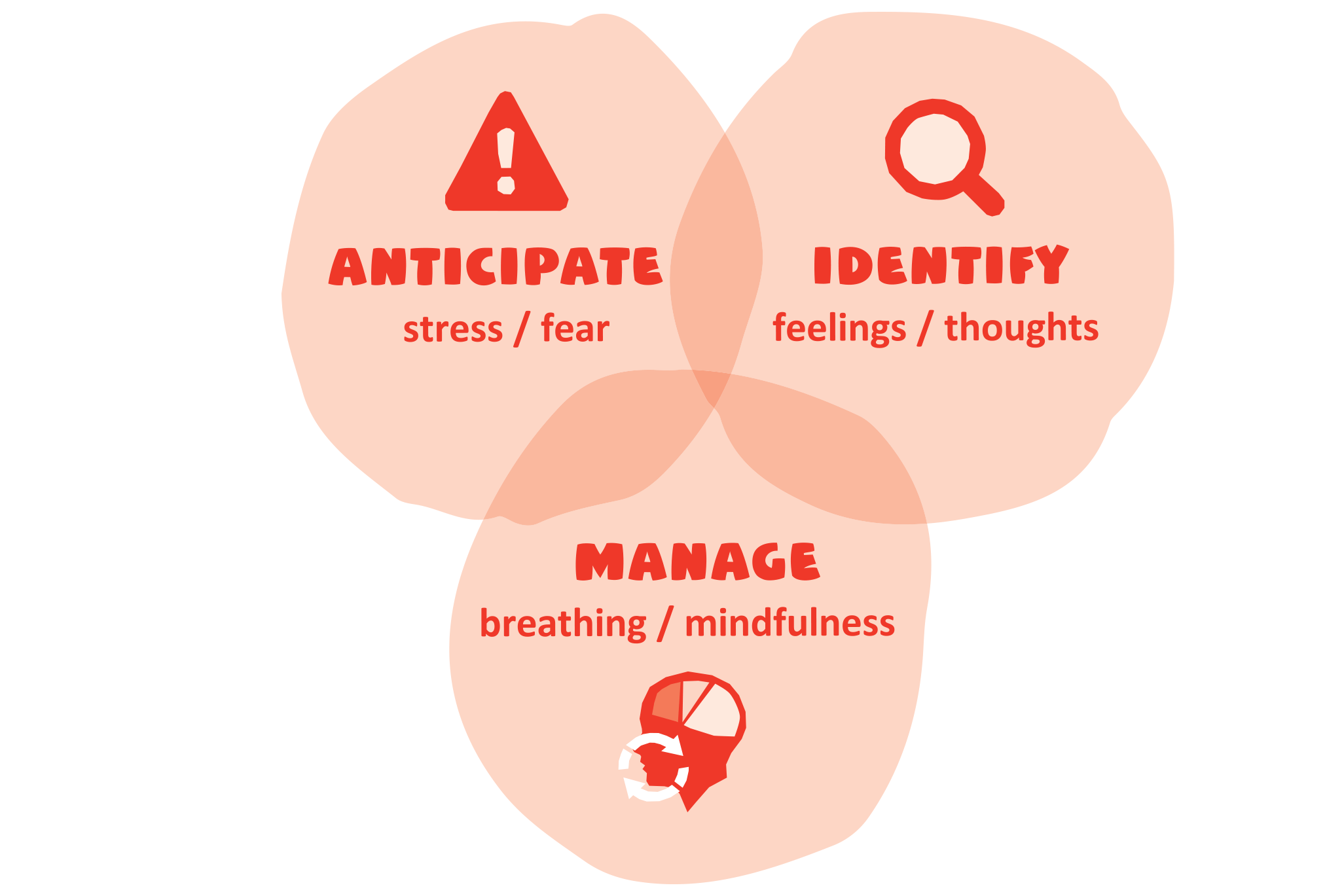Coping with the stress of being under threat
A resource for people who are experiencing threat from an emergency.
Extreme weather events, such as floods and fires, can pose a threat to us, and the way we live.
These events can prompt our minds and bodies to be on high alert. Whilst this is a very natural and common reaction that can help us to be ready to respond to the stressful situation, it can take a toll on our health and wellbeing, especially if we feel this way for a long period of time.
These are some tips for people who might be experiencing high stress following a sustained level of threat.
How we adjust to threat: going into emergency alert mode
When we face a threat that may involve mental or physical challenges and the potential for injury or emotional distress, the body instinctively and quickly reacts to help us deal with the situation.
Our body releases the chemical adrenalin which can trigger changes within our brain, nervous system, blood circulation, muscle tension, as well as mental functioning and our emotional state. This is a type of ‘emergency alert mode’, often described as the “fight or flight” response.
Some of the signs of this mode are:
- our senses can feel highly alert to what is happening around us – sometimes this might even seem like time has slowed down, we feel wide awake.
- high energy – feeling ready or even impatient to deal with the problem, and may be unable to sit still
- greater focus on the external situation and sometimes a sense of urgency to ‘do something’
- our thoughts intensely focussed on problem solving and taking action on the immediate tasks needed for safety and survival
- putting emotions aside to focus on dealing with the practical tasks of managing the immediate situation
- reduced sense of self-awareness, including bodily needs such as thirst, hunger, fatigue, safety.
These reactions can prepare us to perform at our best mentally and physically when the emergency arrives. It is helpful to channel our thinking toward preparing for what needs to be done, rather than becoming overwhelmed with the fear of what might happen.
In addition to the practical tasks and actions that prepare our surroundings for safety and survival, we can also prepare our minds to help us manage the stress so that we can think clearly and make better decisions.
Preparing your mind
This simple technique, known as AIM – Anticipate, Identify and Manage – can help us manage stress during an emergency.

Anticipate what might cause you stress “being separated from family", "the noise of the wind”; write these down.
Identify how you might react to these things. “I get quiet and withdrawn”, “My heart starts to race”; write these down.
Think how you might Manage these reactions. Deep breathing. Using reassuring words: “I can do this”, “I’m prepared for this”, “We are going to get through this”.
After the threat passes
When the threat is over, it is important to be aware that you might feel physically and emotionally drained. Some people describe “feeling like you have hit the wall”.
This often happens when levels of adrenaline subside and we can feel exhausted, weak or numb. Some people may experience a vulnerability for illnesses or chronic pain after high stress events. This impact may last a few hours, a few days or longer.
You can help transition out of emergency threat mode by:
- taking some time out
- getting good sleep
- eating well
- practising calming or relaxing activities
- taking a few long, slow and deep breaths
- limiting the use of stimulants
- doing some light physical exercise
- talk over what has happened with family and friends
- hold off on making major decisions
- try to return to your usual routines as soon as possible
- limit unnecessary additional stress if you can.
If the threat doesn’t pass
There are many situations where the threat could be ongoing or recurring. Some emergencies have a long lead time, such as riverine flooding moving down stream, cyclones forming off the coast. Others may have an ongoing threat and uncertainty, such as a uncontained bushfires. Many communities have also lived through multiple disasters and threats (including COVID), which can impact on our capacity to deal with stress. We can be sensitive to triggers such as warnings of fire, cyclone or flood danger predictions or signs of smoke, high winds or heavy rains.
If the threat is continuous, our mind and body can be in a state or arousal for too long which can impact your health and wellbeing. This can be called emergency threat stress and is common when
- there is a long lead up to an emergency,
- a lot of uncertainty about the situation, or
- where the emergency continues without being resolved.
If we are to remain ready to respond, we need to recognise and manage this type of stress.
Be aware of unhelpful stress reactions
Signs that emergency alert is turning into emergency threat stress are:
- loss of energy, tiredness, physical weakness
- difficulty thinking clearly, making decisions, planning, setting priorities
- focussing on details at the expense of the big picture
- feeling fearful about meeting the crisis and wanting to avoid it
- losing focus on the real situation and getting stuck on thinking about too many ‘what if’ or unrealistic scenarios e.g. ‘perhaps it will go away’, ‘it might not happen after all’, rather than taking useful action
- ignoring basic needs that allow your mind and body to function e.g. working too long or hard without food or rest, forgetting to hydrate.
- taking risks, working inefficiently doing things without proper planning
- becoming overwhelmed by emotions and preoccupied by fear, anger, blaming, irritability, tearful, detached, feeling hopeless, giving up.
Emergency threat stress is a common reaction to prolonged emergency arousal. It must be managed to ensure that you maintain your effectiveness to meet the mental and physical demands needed for coping with the situation.
Managing emergency threat stress: preserving your capacities
Our ability to manage stressful situations is determined by the actual situation (about which we may have little control), and our belief about our capacity to manage it (which we can have more control over than we think).
Here are some tips for managing emergency threat stress:
- Get prepared for the threat, both practically and emotionally. There is much you can do, for both you and the community. Being prepared reduces stress and improves decisions.
- Make a plan with your family/household and neighbours on how you are going to manage a long-term threat. Even when it is urgent, don’t just act impulsively, be steady and methodical. Unless a situation is genuinely life threatening, you can take a moment to take a deep breath and plan.
- Take care of your basic needs. Eat well, get adequate rest, and stay hydrated. Don’t work ‘till you drop’, it takes too long to recover and limits your ability to be effective and ready for the crisis. Do some physical activity to help with relieving any excess adrenalin.
- Take time out to refresh, especially if you can’t think clearly or feel overwhelmed – even just a 5-minute break away from the problem might allow you to find a new solution.
- Concentrate and prioritise the practical actions needed for safety. Focus on one thing at a time and break tasks down into smaller, manageable steps.
- Manage emotions by taking a moment to stop and breathe. Be mindful of your self-talk by focussing on helpful thoughts that encourage optimism, reassurance, and confidence in survival. If you need a moment to relieve the build-up of emotions, take some time out for yourself to talk with a trusted person.
- Your actions will influence others – be mindful of creating a safe and supportive environment for those around you, especially those who may be vulnerable such as children. Help others if you can.
More information
You can find more information on how to prepare for emergencies, as well as how to support people through crisis situations at:
